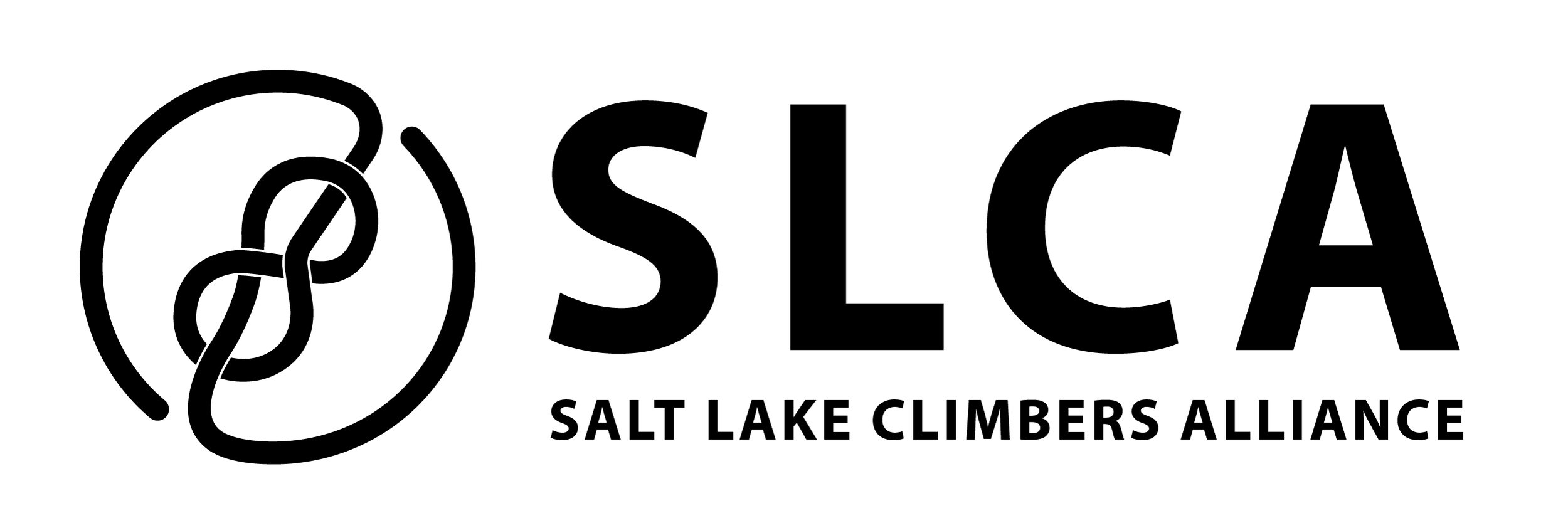Gate Buttress Work Continues: The Fin, Altered States, The Thumb, and the Black Peeler
The Gate Buttress Project
The Gate Buttress Project is designed to address 60 years of recreational impact on a 140-acre parcel of land located in lower Little Cottonwood Canyon. This parcel is privately owned by The Church of Jesus Christ of Latter-day Saints (the Church).
In 2017, the Salt Lake Climber Alliance (SLCA) and the Access Fund signed a recreational lease with The Church and were named active stewards of the Gate Buttress parcel. The lease legitimized public access to the land for recreation, predominantly rock climbing. The Gate Buttress contains approximately 588 rock climbing routes and 138 boulder problems spread out over 38 climbing areas. The first route was established in the early 1960s and the property hosts a myriad of user created social trails that are not only confusing, but also highly eroded and unsustainable for the increasing number of users. This rock climbing resource is deeply loved by Salt Lake climbers and is internationally renowned for its’ excellent Granite rock. As the entrance to Little Cottonwood Canyon, the resource deserves to be well cared for.
The long-term stewardship goal for the property is to create sustainable recreation infrastructure, protect Salt Lake City’s watershed, and deepen the relationship and sense of caring for nature through volunteerism within the climbing community and supporting outdoor industry. This stewardship effort will be a phased approach with phase one already completed in 2018 with focus on Green Adjective, Schoolroom and the Dihedrals. The scope of work for phase two focuses on The Fin, Altered States, The Thumb, and the Black Peeler.
Climbing Access Trail Work
The Gate Buttress is located within the Uinta-Wasatch-Cache National Forest, whose visitation numbers are higher than all five of Utah’s national parks combined. As outdoor recreation and rock climbing specifically continues to grow in popularity, overcrowding is stressing outdoor landscapes beyond their ability to recover naturally. Soil erosion and compaction along with degradation of vegetation create run off and dirties waterways, hence negatively impacting the watershed health. The area’s spider web of social trails hinders search and rescue operations. Lack of signage and unofficial trails also confuse hikers and other visitors to this property.
The Gate Buttress Project is designed to address 60 years of recreational impacts on the 140-acre private parcel. The steep and rocky terrain of the property requires the trails be built by hand using technical stone masonry skills. Professional trail crews will be hired and supported by volunteer labor.
Fixed Anchor Replacement
The mission of the SLCA’s Wasatch Anchor Replacement Initiative is to remove fixed anchors that are aging, corroding, or improperly installed and replace them with stainless steel anchors. The ultimate goal is to replace all plated steel anchors with new stainless steel anchors. The initiative prioritizes its efforts on replacing aging anchors on the most popular climbing routes. Stainless steel anchors have an expected service life of over 50 years and will provide a safe climbing experience for the climbing community for many years to come with little follow up maintenance.
The Gate Buttress parcel contains approximately 588 rock climbing routes, spread over 35 areas. Each climbing route can be thought of as a “vertical trail”, or a unique pathway that one can use to climb up the cliff face. Each of these routes leads the climber up a pathway until they reach the top of the cliff or a convenient stopping location, such as a ledge. The majority of these routes have fixed hardware necessary to ascend and descend the route. Fixed anchors have been installed by climbers throughout the years, some of them put in as early as the 1960s. Anchors now require replacement because the non- stainless steel hardware is starting to show signs of corrosion that could eventually lead to failure.
The implementation of an anchor replacement initiative for a climbing area is a major undertaking in terms of time and expense. During the course of a full day, one person may replace 10 or 12 fixed anchors. On especially long routes with sporadically placed anchors, as is often the case in Little Cottonwood Canyon, one person may replace as few as two to four anchors in a full day. Thus, the replacement process becomes iterative, with multiple days required to upgrade all of the fixed anchors in one area. The goal for 2019 - 2020 is to replace approximately 100-150 fixed anchors at the Gate Buttress parcel per year. Currently these anchors are replaced by volunteers who serve on the SLCA’s Wasatch Anchor Replacement Initiative Committee. A long term goal for the SLCA is to hire professional vertical crews to conduct this work supplemented with volunteers.













